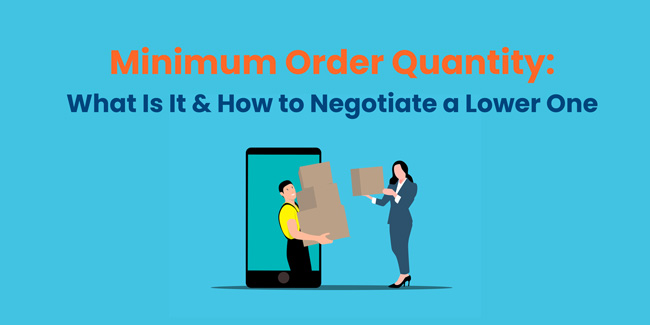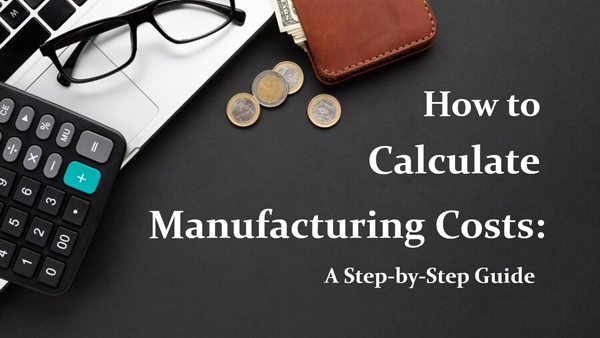Strategies to Negotiate Low MOQ (Minimum Order Quantity)
- Date:
- Author: SVI Content Team
- Share:
When you have a sourcing project for new products and are excited to connect to a manufacturer, and they reply with a certain amount of units, otherwise, no deal. Buyers always encounter this situation and this is the MOQ (minimum order quantity) that sometimes intimidates companies.
In this blog, we will unpack what MOQ means, how it impacts your business, and how to negotiate MOQ with suppliers during your sourcing project.
Part 1. What Is MOQ?
MOQ, which stands for Minimum Order Quantity, is a common concept in international trade. It is the smallest quantity of a product that a manufacturer is willing to produce or sell in a single order. MOQs are commonly used in manufacturing and wholesale industries to ensure cost-effectiveness and efficiency in production and supply chain management.
MOQ is closely related to the supplier’s cost, therefore, it will be adjusted according to the production situation and cost control. Above the specified amount, the supplier can launch the production, on the contrary, it will not accept the order.
For example, if a factory has an MOQ of 1000 units for certain products, you can not order just 500 units—you’d need to order at least 1,000.
Part 2. Why Suppliers Set a Minimum Order Quantity?
Below are reasons why MOQ is set for trade.
1. Factories Have Setup Costs
Setting up machines, sourcing materials, and organizing labor take time and money. Producing small quantities can be expensive for manufacturers while larger orders can spread these costs over more units, making production cheaper per item.
Also, factories need to plan their materials, workers, and machines efficiently. MOQs help them avoid wasting resources on very small orders.
2. Small Orders = “Peanuts”
Besides setup costs, costs of processing orders, packing, and shipping are other factors factories consider. Processing small orders may yield minimal profits or even losses for suppliers, so setting MOQs ensures they maintain healthy profit margins and focus on more substantial, profitable orders.
3. Filtering Customers
MOQs can serve as a natural filter for potential and bigger customers and weed out “tire-kickers.”
If a buyer with mature experience intends to larger volume, he won’t mind the MOQ set by factories. So this helps manufacturers attract serious customers and they can put their effort into cultivating long-term relationships with the customers they want.
Part 3. What Is the Impact of MOQ for Buyers
MOQ has both advantages and disadvantages for buyers.
⭕ Pros:
- Lower per-unit prices: Higher MOQs often mean cheaper prices per item and ever you can get bulk discounts.
- Priority treatment: Companies that place large orders will be prioritized by suppliers.
❌ Cons:
- High upfront costs: You need to invest larger upfront costs to meet the MOQ compared to having a low volume order.
- Risks of excess inventory: Excess inventory adds costs of warehouse space. Ordering more than you need also may end up with unsold stock if demand is lower than expected.
Part 4. How to Negotiate Lower MOQ with Suppliers?
Have you ever been told “No deal for a low amount of order?” To get a low MOQ from manufacturers, take these strategies in negotiation.
1. Negotiate and Accept Higher Prices
Be honest about your needs in product quantity. Some factories are open to flexible volume orders, however, be prepared for a higher price per unit as we know that prices will be more expensive when certain setup costs are spread over fewer units.
2. Mixed Order with Similar Products
If your one single order doesn’t meet the required amount of products, consider combining other orders with similar products at the same manufacturer if possible. The more you consolidate, the easier to get a lower MOQ from suppliers.
3. Group Purchasing
If one company cannot meet the supplier’s MOQ, team up with other businesses that are looking for the same product. Purchasing together can fulfill the requirements and no need to increase your order volume, as well as split the bill with others.
This strategy works for the buyers of generic products and ships to the same destination.
4. Request Samples & Build Relationships
Ask for samples initially for testing and inspection. And promise to place regular orders with quantity gradually rising, not just a one-time deal. Samples are a try before you commit, and the MOQ is the real deal’s entry ticket.
5. Provide Annual Business Forecast and Demonstrate Growth Potential
Share a detailed annual business forecast with the supplier to show your long-term growth potential. Request to start with a lower quantity while assuring them of your ability to scale up and exceed their MOQ in the near future. This demonstrates commitment and builds trust, making suppliers more willing to accommodate your initial needs.
More: FAQ about MOQ:
Q1. How to Tell an MOQ Is Fair?
A fair MOQ is one that aligns with industry standards, offers cost efficiency, and suits your demand without excessive risk. To evaluate:
1. Compare with competitors – Check industry benchmarks and supplier pricing.
2. Analyze cost per unit – Ensure MOQ lowers costs significantly.
3. Assess supplier reasoning – Verify if MOQ is based on production efficiency or bulk material costs.
If MOQ is too high without justification, seek alternatives or negotiate better terms. Or if an MOQ is too good to be true, investigate further! A super-low MOQ can signal poor quality!
❗❗ Red Flags ❗❗:
- Cheap materials & quality issues
- No bulk production efficiency
- Inconsistent production & unreliable capacity
Q2. How to Calculate Minimum Order Quantity of Your Products?
Step 1: Analyze your historical sales data and market trends to estimate future demand for your products within a specific time frame.
Step 2: Set your total budget and then calculate the expenses associated with storing your inventory. And costs can include—warehouse space rents, insurance, shipping, handling fees, and customs.
Step 3: Subtract these costs from your total budget to find out how much you can spend on the actual product.
Step 4: Next, calculate and find the break-even point of how many units you need to sell to recover your investment.
Break-Even Quantity = Fixed Costs / (Selling Price Per Unit – Variable Cost Per Unit)
Where:
Fixed Costs: Expenses that stay the same
Variable Price Per Unit: Costs that change with order size
Selling Price Per Unit: Price at which you sell each unit
Step 5: Use the Economic Order Quantity (EOQ) formula to find the optimal order quantity:
EOQ = √((2 * D * K) / H)
Where:
D = Annual Demand In Units
K = Order Cost Per Purchase Order
H = Annual Holding Cost Per Unit
Step 6: After getting the results, remember to exceed the break-even point and set a number close to EOQ to gain profitability and optimize ordering and holding costs. And you may adjust the volume slightly flexibly according to suppliers’ MOQ and market trends.
Final Thoughts
Minimum Order Quantity is rarely set in stone. It is a starting point for negotiation, not a dead end. If you want to know how to negotiate low MOQ? Put the strategies we mentioned into practice. Failure doesn’t exist because you either succeed or learn from the negotiations, so embrace growth boldly.
Suppliers deserve to profit, and smart buyers know the conversation isn’t about “winning” – it’s about finding the sweet spot where both sides thrive. A reasonable volume based on the industry reflects a supplier’s costs and capabilities. However, what if their MOQ feels like a trap door to bankruptcy? Walk away. There are always other fish in the sea.
Treat MOQ talks like a chess game, not a fistfight. If you find it difficult or risky, let SVI Global help you with it. The team at SVI Global can be your bilingual partner in addressing factories. Our professionals have enough experience with manufacturers and will test prices and minimums so you don’t gamble blindly.







